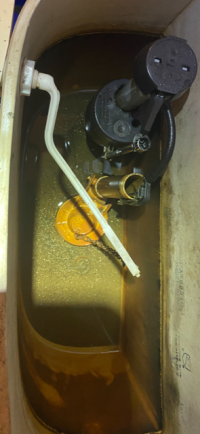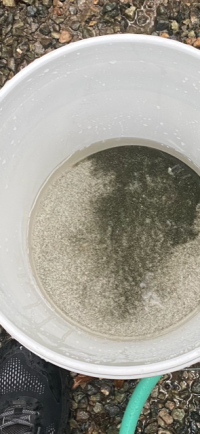I’ve been looking around this forum the last few days and haven’t found exactly what I’m looking for, so I figured it was time to join and ask! I’ll start by saying there is ALOT of excellent info on here, and thanks in advance for anyone who can point me in the right direction!
Some basic info: I have a single family rancher, 1 full bath, kitchen sink,, clothes washer, water heater, and an outdoor hose faucet… a rather small system. I have a 20 gallon pressure tank, the system has no filter (soon to change).
I have recently, and seemingly out of nowhere, had extreme amounts of sediment in my water, if I had to describe it I’d say ‘rock chips’. I’m talking all in the last 3 days. I was away for work for a few nights when this started, the wife mentioned water pressure issues in the shower and bath faucet. When I got home I found them, and the toilet, to be completely clogged and non-flowing with rock chips. I then ran my outdoor hose into a bucket and in 5 gallons got a very healthy handful of sediment.
Fast forward to today, I called the one and only local well company. They seem rather confident it’s a failed pressure tank and want just shy of $1k to replace it. My water pressure seems fine coming out of the unrestricted garden faucet, and I don’t believe my pump is short cycling, tank has a hollow sound up top (not waterlogged). Could it possibly be the tank? I’m having a hard time believing it’s the tank? I would have assumed the root of the problem is in the actual well (cracked casing?) but I’m not expert.
Does that sound right?
Thanks I’m advance!
Some basic info: I have a single family rancher, 1 full bath, kitchen sink,, clothes washer, water heater, and an outdoor hose faucet… a rather small system. I have a 20 gallon pressure tank, the system has no filter (soon to change).
I have recently, and seemingly out of nowhere, had extreme amounts of sediment in my water, if I had to describe it I’d say ‘rock chips’. I’m talking all in the last 3 days. I was away for work for a few nights when this started, the wife mentioned water pressure issues in the shower and bath faucet. When I got home I found them, and the toilet, to be completely clogged and non-flowing with rock chips. I then ran my outdoor hose into a bucket and in 5 gallons got a very healthy handful of sediment.
Fast forward to today, I called the one and only local well company. They seem rather confident it’s a failed pressure tank and want just shy of $1k to replace it. My water pressure seems fine coming out of the unrestricted garden faucet, and I don’t believe my pump is short cycling, tank has a hollow sound up top (not waterlogged). Could it possibly be the tank? I’m having a hard time believing it’s the tank? I would have assumed the root of the problem is in the actual well (cracked casing?) but I’m not expert.
Does that sound right?
Thanks I’m advance!



